#multilinks
Text

Free MultiLinks for your profile
#carrd#template for carrd#carrd template#carrd templates#carrd theme#template#landing page#linkedin#link click#link#multilinks#linktree
4 notes
·
View notes
Text

Multi-Links Nail studio
#linkbio#linkinbio#links#linktree#multi_links#multilinks#multi links#nails#nail art#cute nails#nail design#nail style#nail colors#nail fashion#nail polish
1 note
·
View note
Text
Wi-Fi 7 Promises Faster Speeds, Lower Latency and Enhanced Connectivity

The Wi-Fi Alliance released a new version of its wireless technology Monday, boasting new features designed to boost performance and improve connectivity across a variety of environments. https://jpmellojr.blogspot.com/2024/01/wi-fi-7-promises-faster-speeds-lower.html
0 notes
Text










Charlotte Mills sprites - Charlotte in Multilink World
0 notes
Photo

#WRC rally art suspension #multilink of rear #longtravel #semashow #sema #mercedesbenz #190e https://www.instagram.com/p/CkGjyBTPO4n/?igshid=NGJjMDIxMWI=
0 notes
Text
Senior POS Terminal Application Software Engineer at Waya Multilink
Senior POS Terminal Application Software Engineer at Waya Multilink
Lead software development
Build POS Terminal applications for Android and Linux Terminal
Build transaction processing engine
Build transaction management system
Build terminal management system
Build agency management system
MUST HAVE
4 Years of Experience As A JAVA SPRINGBOOT SOFTWARE ENGINEER
Experience In Banking And Payment Software
Experience In Building Pos Terminal…

View On WordPress
0 notes
Text
Ferrari - La Ferrari
F1 (and cars) MASTERLIST
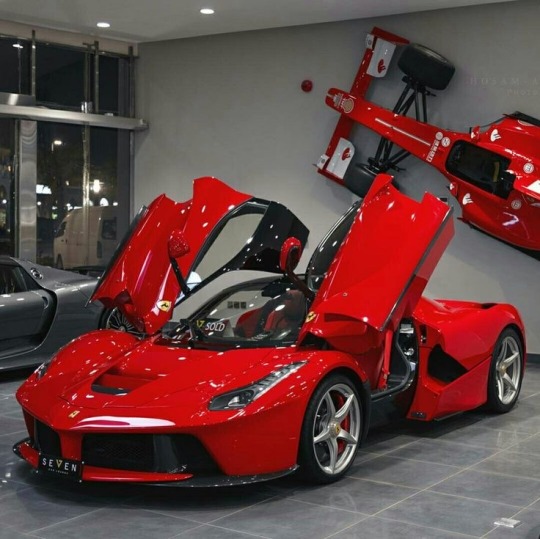
Italians just do it better…

The car is equipped with a version of the F140 engine, a 65° V12 Otto cycle, direct injection and atmospheric fuel, mounted in a central position, of 6262 cm³ delivering 800 HP at 9000 rpm, 700 N m of torque at 6750 rpm, with compression ratio of 13.5:1; in addition, the HY-KERS energy recovery system, with the additional 163 HP developed by the relevant electric engine, brings the combined power and torque values to, respectively, 963 HP and over 900 N·m. Thanks to the hybrid scheme, combined fuel consumption is 14.2 l/100 km (7.2 km/l), also managing to limit CO2 emissions to 330 g/km.

The chassis and bodywork, with a dry weight of 1255 kg, are entirely made of four different types of carbon fiber and Kevlar, differentiating themselves in the various areas, adapting to the specific rigidity and shock absorption needs of each. The aerodynamic drag coefficient (Cx) is 0.299 in the minimum drag configuration; but it can vary, increasing, depending on the configuration assumed by the active aerodynamics with which the car is equipped. The suspensions are overlapping wishbones at the front and multilink at the rear. The brakes are made of carbon-ceramic composite material by Brembo, and power to the rear wheels is managed through a 7-speed dual-clutch F1 gearbox.
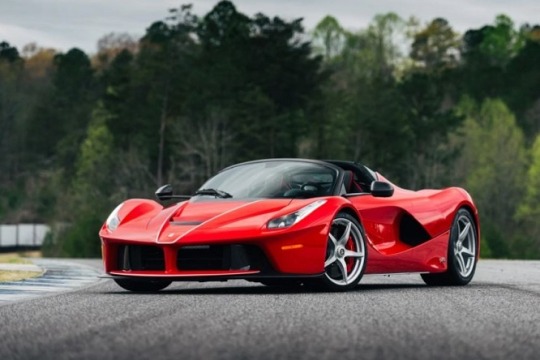
The data that the company provides regarding acceleration are the following: 0-100 km/h in less than 3 seconds, 0-200 km/h in less than 7 seconds and 0-300 km/h in 15 seconds; the maximum speed indicated is over 350 km/h. This made it the most high-performance and fastest road Ferrari ever produced up to that point.
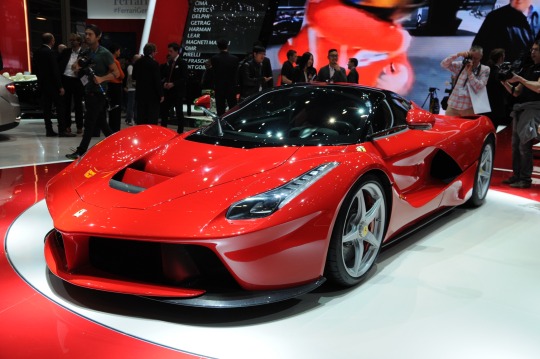
#italy#italian#italia#ferrari#la ferrari#classic cars#fast cars#cars#formula uno#formula 1#formula racing#formula one#f1#ferrari f1#ferrari formula 1#ferrari formula one#enzo ferrari#dino Ferrari
20 notes
·
View notes
Text

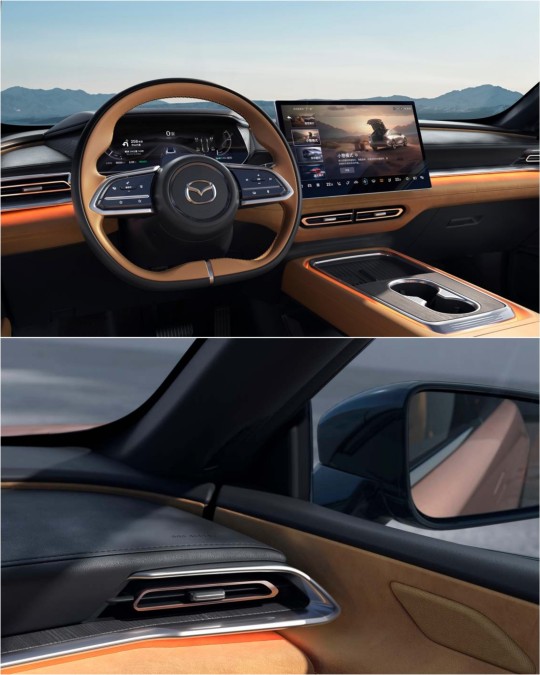
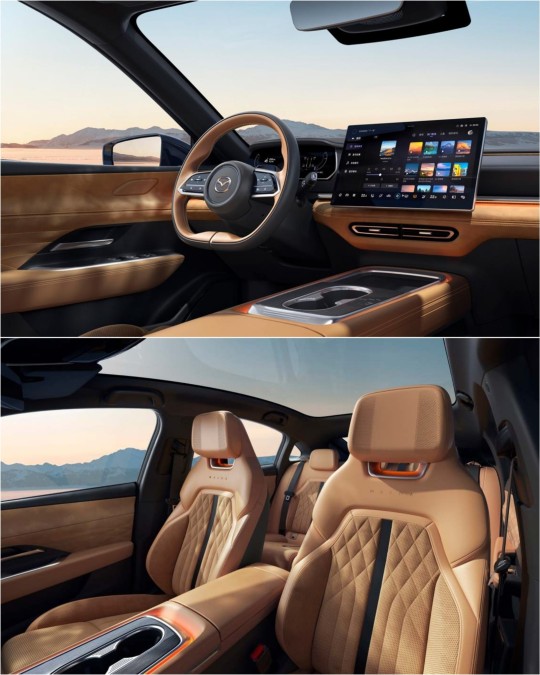

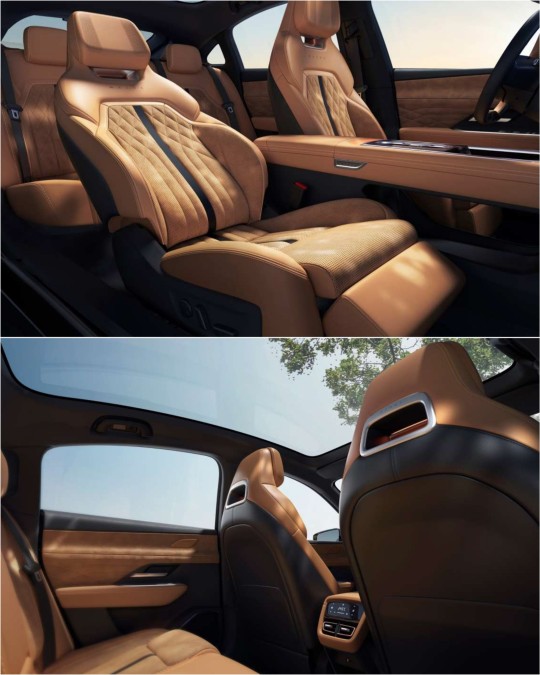
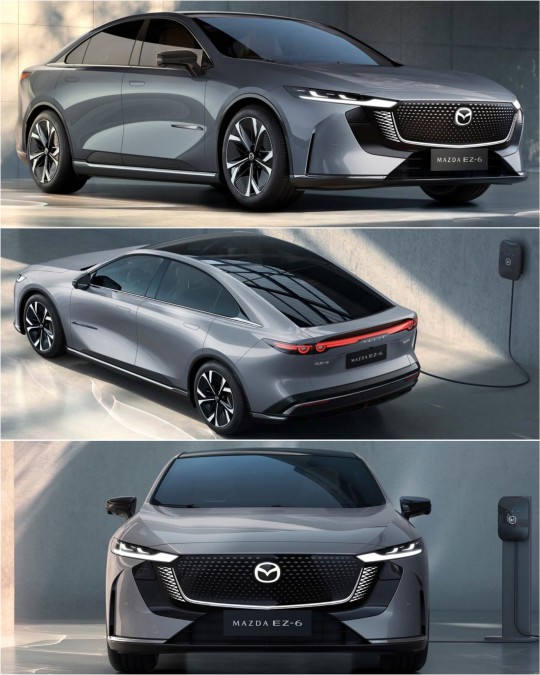

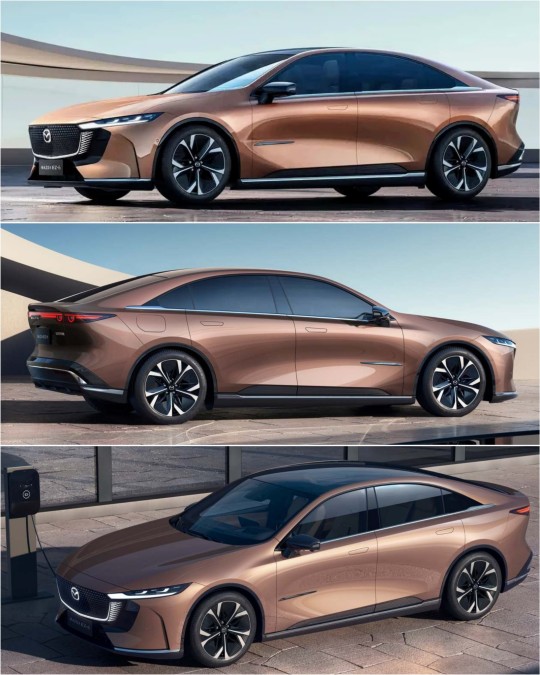
💬💭 Your thoughts on Mazda's new RWD Sedan EZ-6 (Chinese market only, at the moment)?
50-50 weight distribution, front strut and rear multilink suspension.
EV: 373 miles (600 km).
PHEV: 621 miles (1,000 km) on a single tank.
#TopMiata #Mazda #mazdaez6 #mazdaev #ev #ez6
4 notes
·
View notes
Note
everybody and their dad has made a "what if all the zeldas and links were in one place" au. there is nothing wrong with yours and that anon is being really weird about it. i still am not sure why LU got so Popular compared to all the other ones but that doesn't give anybody a reason to go dunk on multilink aus that Aren't LU?? either way. hi i personally love your different zeldas so much and i hope you have a wonderful day.
awwww thank you so much, it makes me so happy to hear that you like my zeldas <3 and yeah idk why lu got so popular compared to other ones-- ive mentioned this before, but ive been in the fandom since i was like, 9. not just a fan but like actually in the fandom, cosplays (not halloween costumes, honest to go cosplay), fan art (posted to DA, of course, XD) fanfics (written in my fluffy early 2000s heart locket diary that i read out loud to the fellow campers at church camp) FAN SONGS AND AMVS the whole 9 yards. so i have seen thousands of links meet aus come and go, even before skyward sword came out. hell, i distinctly remember 'links meet spandex aus' (*shudders* if you dont know what the skyswd spandex au was, dont look it up, it's nasty) so i have no idea what makes lu so special. the art maybe? but jojo isnt the only links meet fan comic out there (like linked maze, linkverse, bonus links, all of which rock but i wont tag bc i doubt they want to be associated with fandom wank-- but you should def check them out!! especially linkverse, mina is a wonderful artist and so sweet) and certainly wasn't the first links meet fancomic. they were all the rage on DA once skyward sword established a lot of new lore, and you can still find them archived on there, and even before link meet fancomics became common, link meet aus were alllllll over fanfic.net. one common one that i have remember being insanely popular is the links watching each other play their games and remarking on them, a trope that was super common post skyswd release but has fallen out of fashion. jojo is a wonderful artist, with interesting and creative designs, but jojo isn't the end all be all, ya know?
idk, in the nicest way possible, lu is one version of a very common, very old trope that has been around since the fandom started, and it is no better (or worse!) than any other links meet, and its fandom has no reason to be as stuffy, overprotective, or self-absorbed as it unfortunately can be when at the end of the day, its comic is just one out of a million.
okay wank over *wheew*
5 notes
·
View notes
Text
"Landstar Multilink: Elevate Your Journey with Exclusive Private Jet and Charter Services"
Take a private jet trip planned by Landstar Multilink Premier Charter Services and have an experience unlike any other. Make your personalized travel reservation now.

#private jets#jets#air tickets#ticket booking#my ticket booking#private aircraft price#private jet price#private plane price#private airplane price.
2 notes
·
View notes
Photo







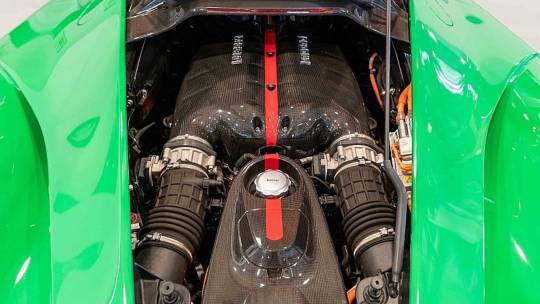
Ferrari LaFerrari 'Signal Green' (for six years it was owned by Jay Kay. For sale in 2019).
Unveiled at the 2013 Geneva International Motor Show as a replacement for the Enzo, the Ferrari LaFerrari was a technological tour de force that took the world by storm. Maranello's first production model to be equipped with a hybrid power unit, the sixth-generation hypercar was the fastest and most powerful road-going Ferrari ever. It was, and remains, one of the greatest achievements in the marque's 75-year history.
Compared to contemporaries such as the Porsche 959 and Bugatti EB110, the first Ferrari hypercars had been conservative designs. For all their astonishing pace, the 288 GTO and F40 had lacked headline innovation, focusing instead on a back-to-basics ethos of minimal weight and colossal power. With the subsequent F50, the Prancing Horse had abandoned the traditional spaceframe in favor of a more futuristic carbon fiber tub, but there was little else to whet the appetite of techno freaks. Its successor, the Enzo, upped the technological ante. The first Ferrari hypercar to feature an automated paddle-change transmission and active aerodynamics, it represented a radical leap compared to the outgoing F50. The Enzo was an up-to-the-minute interpretation of what a flagship sports car should be all about. And then along came the game changer.
Based around a carbon fiber monocoque designed by F1 technical director Rory Byrne, the Type F150 LaFerrari adopted an enhanced version of KERS (Kinetic Energy Recovery System), which had been used in Grands Prix since 2009. Like any other hybrid set-up, KERS employed electric motors in addition to a traditional petrol engine. With an electric motor delivering maximum torque from zero rpm, the benefits included noticeably stronger acceleration. Kimi Räikkönen had emphatically proven this in Formula 1 when his KERS-equipped Ferrari stormed past Giancarlo Fisichella to win the 2009 Belgian Grand Prix—Fisichella attributing Räikkönen's win to the hybrid system.
Dubbed HY-KERS, the production version in the LaFerrari mated a 120-kilowatt motor to a 6,262 cc 65-degree V-12 to deliver quite extraordinary results. Delivering a combined 950 horsepower and 715 lb ft of torque through a seven-speed dual-clutch Getrag transmission, the car could accelerate from 0-100 km/h in a mere 2.9 seconds. The manufacturer claimed that 0-300 km/h could be dispatched in 15 seconds, while top speed was an astonishing 350 km/h. Even more startling, however, was the car’s pace around the Fiorano test track, where it was said to lap more than five seconds quicker than the Enzo. Such pace was in no small part down to the brilliance of the hybrid set-up. With HY-KERS taking care of low-down torque, the engine could be tuned for maximum power at high revs without the car becoming a temperamental prima donna. As a result, Ferrari engineers were able to produce an engine that was more potent than the Scuderia’s last V-12 single-seater, in a car able to cope with city traffic.
To ensure the thundering performance was accessible, electronic traction control was integrated with the hybrid system, and there was a third-generation electronic differential. The double-wishbone front- and multilink rear suspension was equipped with active damping, while the Brembo carbon-ceramic brakes measured a huge 398 mm at the front and 380 mm at the rear. The Pirelli P-Zero front tyres were an equally vast 265/30 R19, but were nonetheless dwarfed by the 345/30 R20 rears.
Drawing from the Grand Prix team’s expertise in computational fluid dynamics, the composite body continued the high-tech theme. Produced in-house alongside the Scuderia’s F1 racers, it was as aerodynamically efficient as it was beautiful. The vast scallops on each flank served to extract air from around the front wheels, increasing the downforce created by the active front diffuser, as well as channelling air to the rear-mounted radiators. A guide vane in the underbody automatically reduced flow to the front radiator to reduce drag, while dynamic air intakes on the haunches boosted ram effect for an additional 5 horsepower at speed. At the rear, a computer-controlled spoiler optimised drag and downforce, while dynamic diffuser flaps helped “suck” the car onto the road. This electronic gadgetry added up to 360 kilograms of downforce when cornering at 200 km/h, reducing it to 90 kilograms in a straight line at the same speed.
Remarkably, the carbon fibre monocoque boasted a 27 per cent improvement in torsional stiffness compared to the Enzo, yet was some 20 per cent lighter. In spite of the HY-KERS with its eight 15-cell battery modules, the LaFerrari was no larger than its predecessor, while the centre of gravity was lowered by 35 mm—providing further improvements to balance and stability. Visually, the whole was tied together into a tautly styled berlinetta that combined hints of classic racing icons such as the 330 P4 and 312 P with exciting flourishes from the modern Formula 1 era. In creating the LaFerrari body, form very much followed function, yet never has the application of science looked quite so stunning.
#Ferrari LaFerrari#'Signal Green'#Jay Kay#Geneva International Motor Show#Porsche 959#Bugatti EB110#288 GTO#F40#F50#Enzo#KERS#Räikkönen
47 notes
·
View notes
Text
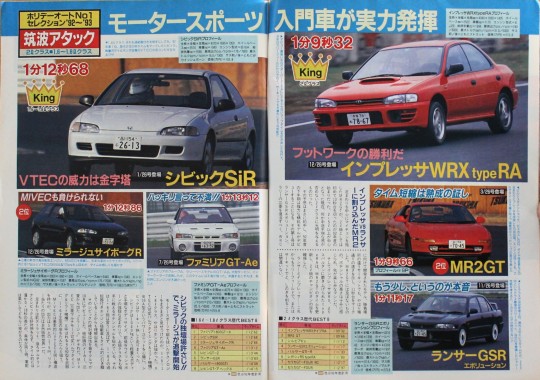
Holiday Auto No1 Selection '92~'93
Tsukuba Attack
2ℓ class ■ 1.6~1.8ℓ class
Motor sports introductory car demonstrates its ability
MR2 interrupting the Impreza & Lancer
It was the beginning of fiscal 1999 when the MR2GT, which was modified around the suspension, broke the 10-second mark for the first time as a 2nd class. At present, 2.5 liters and above are the main focus, and it gave light to the two classes, which can't deny the feeling of something half-finished.
That prediction was right, and in the second half of fiscal 1999, a powerful elite model will debut. The first is the Lancer GSR Evolution. WRC to revive Mitsubishi in the rally.
This model was developed for the "". Even at a circuit with a different competition location, it still showed the speed of the rumor ", and marked the 1 second range. Although it is not as good as the MR2GT, it is a machine that you can fully feel its high potential and look forward to the future.
And the Impreza WRX. A more Spartan-polished type RA updated the time of MR2GT and secured the position of the 2nd class champion.
Lancer and Impreza There is no doubt that they will continue to compete on the rally field and on the circuit.
PIC CAPTIONS and SPEC BOXES 2L CAR PAGE
Impreza WRXtypeRA profile
Length x Width x Height = 4340 x 1690 x 1405 Wheel Base = 2520
Vehicle weight kg = 1170
Engine type = E J20
Total displacement c = 1994
Maximum output ps/rpm = 240/6000 Maximum torque kgm/rpm=31.0/5000 Suspension
Both front and rear strut
Price (10,000 yen) 210.8
Immediately after his debut, WRX suddenly set a lap time that didn't take a hit in over 2.50.
This year, it looks like it's going to rampage not only on the rally field, but also on the circuit.
MR2
Bilstein shock, viscous LSD, tire change etc.
Even though the SW type engine with improved suspension and brakes is the same, this
The time has greatly improved. I gave the face of a domestic midship
EVO GSR
“In the 2.0 class, it was the 3rd fastest time in 2009 and the 4th fastest time ever.
The strongest power unit in its class, a chassis designed for WRC
Considering sex, this time is not enough!
Lancer GSR Evolution Profile
Length x Width x Height = 4310×1695×1395
Wheelbase Race mm=2500
Vehicle weight kg=1240
Engine model = 4G63 turbo
Total displacement cc=1997
Maximum output ps/rpm=250/6000
Torque kgm/rpm=31.5/3000
Suspension front strut, rear multilink
Price (10,000 yen) 273.8
1.6 to 1.8 litre cars page.
Forgive the Civic monopoly!!, and the Mirage begins the pursuit
It was the 1.6L to 1.8L2 class that vividly showed off the technology that had been refined through motor sports. Honda was strong. With a VTEC (Variable Valve Timing & Lift Mechanism) B16A power unit at its heart, the Civic raced through the narrow circuit.
With its lightweight body of 1040kg, affordable body size, and strong suspension with front and rear double wishbones, the Civic has the potential to compete with even the upper classes. This can be understood from the fact that not only the 1.6-liter class, but also the 1.8's supercharged engine-equipped car is ahead in terms of time.
A car that threatened the Civic's absolute superiority debuted in October. That's the Mirage from the best-performing manufacturer, Mitsubishi. Armed with the 4G92 type called MIVEC (Mitsubishi Multi-Mode Variable Valve Timing & Lift Mechanism), it is aiming for the 1.6-liter throne.
MIVEC has basically the same structure as VTEC, but the output is 175ps, which is 5% higher. The output per liter is the best in the world for naturally aspirated engines.
The suspension has a front strut and a rear multi-link, which contrasts well with the Civic. In terms of time, the difference is only 0.18 seconds, but when the conditions are the same, who will be the winner?
Civic SiR profile
Length x Width x Height = 4070 x 1695 x 1350 Wheelbase mm = 2570
Vehicle weight kg = 1040
Engine model = B16A
Displacement = 1595
Maximum output ps/rpm = 170/7800 Maximum torque kgm/rpm = 16.0/7300 Suspension front/rear = double wishbone
Price (10,000 yen) = 153.8
▼ The Civic marked the 1st place in 1992 and the 2nd fastest time ever in the 1.8ℓ class, even against a supercharged car. A skill that can be achieved by the excellent combination of a lightweight body and Honda's proud VTEC
Clearly dissatisfied!! 1 minute 13 seconds 12
7/26 issue Familia GT-Ae
▲ Group A of Familia, GT-Ae of rally base model. Armed with a large turbine and intercooler, I was dissatisfied with this time. In defense, the engine was out of order at the time of the interview.
Familia GT-Ae profile
Length x Width x Height = 4075 x 1690 x 1390 Wheel base = 2450
Vehicle weight kg = 1210
Suspension front/rear = both struts
Engine Model = BP
Total displacement cc = 1839
Maximum output ps/rpm = 210/6000
Maximum torque kgm/rpm = 25.5/4500
Price (10,000 yen) = 219.8
MIVEC cannot lose
1 minute 12 seconds 86
2nd place
12/26 issue appeared
Mirage Cyborg R
▲ The reborn Cyborg R equipped with Mitsubishi's new-generation high-speed engine, MIVEC. In terms of power, it surpasses VTEC's B16A type 170ps with 175ps, but unfortunately it does not reach the time.
Mirage Cyborg R Profile
Overall length x width x height = 3950 x 1690 x 1365
Wheelbase = 2440
Vehicle weight kg = 1040
Engine model = 4G92
Total displacement cc = 1597
Maximum output ps/rpm = 175/7500 Maximum torque kgm/rpm = 17.0/7000
Front/rear suspension = strut/multi-link
Price (10,000 yen) = 188.0 (5-speed MT)
#Tsukuba#Honda Civic#Mazda Familia GT-AE#Impreza WRX type RA#Mirage cyborg#JDM#Toyota MR2#SW20#Lanevo#Evo lancer
15 notes
·
View notes
Text
Mobile Landing Page - BarberShop template💈📲
#linkbio#linkinbio#links#linktree#multi_links#multilinks#template#multi links#barber#barbershop#barberlife#hair salon#link in bio#link in description#linkedin
1 note
·
View note
Text
Too lazy to update Tumblr with Art
...because using tumblr makes me tired.
If you want to see any up to date art or content in general, especially stuff based off my #enderal #headcanon, here are some options:
Instagram
Twitter
These two are updated the most regularly as of this post, with Instagram being the most convenient for viewing my artwork.
Additionally, here are other options in the form of multilink sites~
carrd
linktree
Both offer the same links to various platforms, so whichever you choose to browse is entirely up to you. In addition to the main twitter and Instagram mentioned above, you can find:
Spicy Twitter
Picarto (Spicy for Followers only)
Itaku (Spicy)
Ko-Fi
Patreon
Twitch
AO3 (Spicy Words)
Pillowfort (Spicy Tumblr)
5 notes
·
View notes
Text
Charlotte in Multilink World Intro
1 note
·
View note
Text

Mercedes-Benz W201: primeiro capítulo da história Classe C faz 40 anos
A 8 de dezembro de 1982, a Mercedes-Benz apresentou o W201. Este modelo faz parte da história de sucesso do Classe C, tendo todos os Mercedes-Benz do segmento esta designação desde 1993.
Durante décadas, os automóveis de passageiros da Mercedes-Benz pertenceram às classes de luxo e média-alta. Isso mudou no final de 1982, através do 190. Com a introdução do modelo 190 e 190 E (W201), a Mercedes-Benz lançava-se na gama dos veículos compactos (naquela altura, a definição de “compacto” era diferente da atual), produzindo um modelo de menores dimensões, que se juntava a outros bem enraizados na marca como o executivo Classe S, o modelo de gama média superior, W124 (antecessor do Classe E) e o desportivo SL.

O design do W201 também estabeleceu referências ao definir um segmento totalmente novo na gama da marca, destacando-se pelas suas linhas modernas, que privilegiavam o aerodinamismo. Com um coeficiente aerodinâmico (Cd) igual a 0.34, o modelo evidenciava a melhor aerodinâmica de todos os modelos de três volumes da Mercedes-Benz, aquando da sua apresentação.
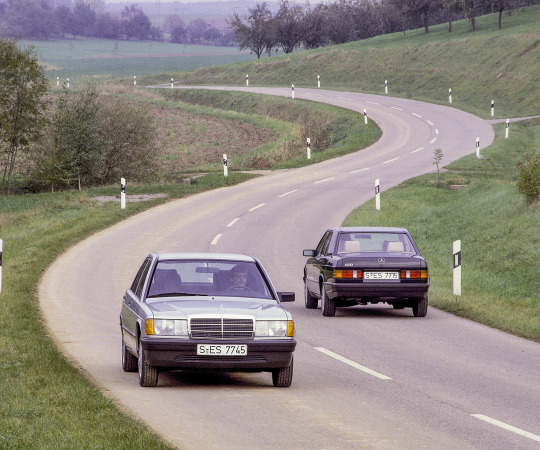
Mais conhecido como o "190" ou "Baby-Benz", o modelo celebrou a sua estreia com dois motores de quatro cilindros a gasolina: 190 era a designação atribuída inicialmente à versão equipada com motor de 90 cv de potência. O 190 E a gasolina com sistema de injeção produzia 122 cv de potência.

A Mercedes-Benz alargou subsequente e sistematicamente a gama através da produção de várias versões inovadoras. Apenas alguns exemplos: o 190 D (72 cv, de 1983) era conhecido como o whisper diesel e foi o primeiro veículo ligeiro de passageiros produzido em série com isolamento acústico do motor. Em 1986 o modelo equipado com motor Diesel foi lançado com novos níveis de prestações – exclusivamente para o mercado americano até ao outono de 1987 - na versão 190 D 2.5 Turbo, cujo motor de cinco cilindros produzia 122 cv. Para a potente versão de seis cilindros 190 E 2.6 (122 kW/166 cv, também a partir de 1986), os engenheiros venceram o desafio tecnológico de instalar o motor M 103 de seis cilindros em linha no compartimento do motor do W201.
Histórico de competição

O 190 E 2.3-16 também demonstrou as suas capacidades desportivas na inauguração do novo circuito de Nürburgring: a 12 de maio de 1984, 20 pilotos inauguraram o novo circuito com uma prova ao volante deste veículo. O vencedor foi o jovem piloto Brasileiro Ayrton Senna. O topo de gama era o 190 E 2.5-16 Evolution II de elevada potência (235 cv), que também formou a base para o bem-sucedido veículo de competição que participou no Campeonato Alemão de Turismo (DTM) desde 1990.
Inovador na segurança
O W201 mostrou-se revolucionário também no capítulo da segurança o dos mais destacados. Realce para a suspensão traseira independente multilink, com cinco braços em cada lado, que, até hoje, permanece um conceito standard utilizado na indústria automóvel. O design do tejadilho do W201 com as suas longarinas posicionadas na periferia, tornou-se o padrão utilizado nos modelos seguintes da Mercedes-Benz, dado o seu baixo peso e excecional estabilidade. Pela primeira vez na classe de compactos foi utilizada uma estrutura em forquilha constituída por longarinas cónicas de deformação programada, construídas em chapa de aço de elevada resistência, para um excelente desempenho durante uma colisão, particularmente em situações de impacto frontal descentrado.
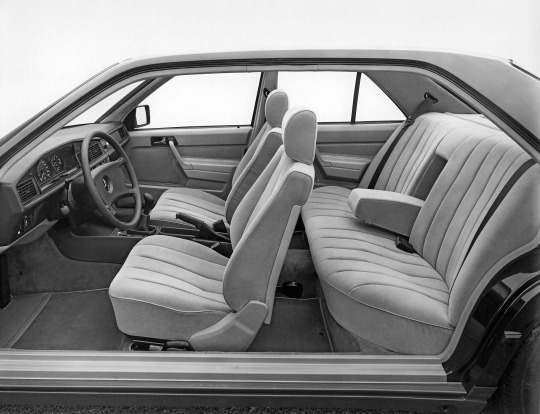
1,8 milhões de unidades produzidas
A produção em série do W201 teve início em Sindelfingen. Posteriormente, a produção também foi iniciada na fábrica de Bremen da Mercedes-Benz. Até agosto de 1993 foram produzidas cerca de 1 879 630 unidades W201. Até hoje, a fábrica de Bremen mantém-se como a principal fábrica do Classe C, que se tornou o sucessor do W201 com o modelo 202 lançado em 1993.

3 notes
·
View notes